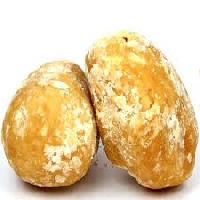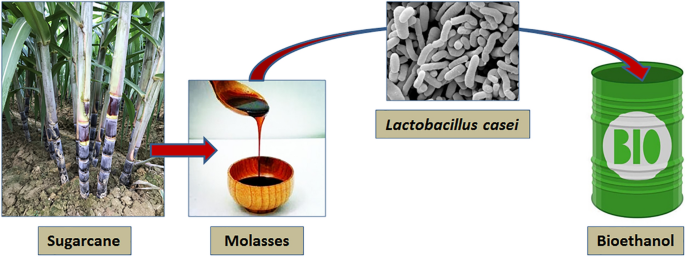The Trip of Sugarcane: From Harvest to Everyday Products
The journey of sugarcane is a complex procedure that starts with meticulous farming and culminates in a variety of products that penetrate our daily lives. As we check out the different elements of sugarcane's journey, its function in sustainability and the broader implications for our setting come into sharper focus.
Growing of Sugarcane
The cultivation of sugarcane is an important farming procedure that needs certain environmental conditions and administration practices. Optimal growth occurs in tropical and subtropical regions where temperature levels range in between 20 ° C and 32 ° C. Adequate rains or watering is crucial, as sugarcane grows in moist soil with well-drained problems (sugarcane product). Dirt top quality considerably influences yield; therefore, farmers typically perform soil tests to figure out nutrient demands
Planting commonly takes place in rows, using stem cuttings called setts, which are grown flat. This approach facilitates efficient harvesting and makes best use of sunshine direct exposure. Crop rotation and intercropping are recommended methods to improve dirt fertility and decrease bug invasions. Additionally, farmers employ integrated pest administration techniques to minimize chemical inputs while guaranteeing healthy plant growth.
Timely application of these plant foods can considerably boost sugar returns. Overall, successful sugarcane cultivation hinges on a combination of ecological stewardship, strategic preparation, and ongoing management techniques.
Gathering Strategies
Successful sugarcane growing finishes in the collecting phase, which is pivotal for making the most of return and guaranteeing top quality. The timing of the harvest is vital; sugarcane is typically gathered when sucrose degrees top, generally between 10 to 18 months after planting. This duration differs based on climate, dirt kind, and sugarcane variety.
Collecting techniques can be broadly categorized into guidebook and mechanical approaches. Manual harvesting is labor-intensive, counting on skilled workers that make use of machetes to cut the stalks close to the ground. This approach enables careful harvesting, where just the ripest walking canes are chosen, thus improving overall sugar web content.
Alternatively, mechanical harvesting has acquired popularity because of its performance and cost-effectiveness. Specialized farmers equipped with reducing blades and conveyor systems can process large areas rapidly, substantially minimizing labor prices. This approach may lead to the addition of immature canes and a potential decrease in sugar quality.

Despite the method employed, ensuring that collected walking canes are moved quickly to processing facilities is essential. Prompt taking care of decreases perishing and protects the integrity of the sugarcane, establishing the phase for ideal processing.
Processing Approaches
Processing sugarcane involves numerous important steps that transform the collected stalks right into usable items, mostly sugar and molasses. The initial phase is washing the cane to get rid of soil and particles, complied with by the extraction of juice via crushing or milling. This procedure normally employs hefty rollers that break the walking cane fibers to release the pleasant liquid contained within.
When the juice is extracted, it goes through clarification, where contaminations such as soil fragments and bagasse are gotten rid of. This is often attained by adding lime and heating the juice, enabling sedimentation. The cleared up juice is then concentrated through evaporation, where water web content is minimized, leading to a thick syrup.

Inevitably, the handling of sugarcane not only creates sugar and molasses yet also lays the groundwork for different by-products, which will be discovered in succeeding discussions.
Products Derived From Sugarcane
Sugarcane is a flexible plant that generates a wide range of products past just sugar and molasses. Among the main great post to read spin-offs are ethanol and biofuels, resource which have actually obtained prestige as renewable resource resources. Ethanol, generated via the fermentation of sugarcane juice, works as an alternative to fossil fuels and is usually combined with gasoline to create cleaner-burning fuels, decreasing greenhouse gas discharges.
Additionally, sugarcane is a considerable resource of bagasse, the coarse deposit continuing to be after juice removal. Bagasse is made use of in numerous applications, consisting of the manufacturing of paper, eco-friendly product packaging, and as a biomass gas for power generation. Its usage not just minimizes waste however likewise improves the sustainability of sugarcane processing.
In addition, sugarcane-derived items include the food industry, where it functions as an all-natural flavoring agent and sweetener in numerous culinary applications. In the realm of cosmetics, sugarcane removes are included into skincare items because of their natural exfoliating buildings.
Ecological Effect and Sustainability
The cultivation and handling of sugarcane have considerable implications for ecological sustainability. This plant requires significant water resources, often bring about exhaustion of local water products and impacting bordering environments. Additionally, the usage of fertilizers and chemicals in sugarcane farming can lead to dirt deterioration and river air pollution, positioning threats to biodiversity.

Lasting sugarcane farming also promotes dirt wellness through crop turning and decreased husbandry, enhancing carbon sequestration. The adoption of these methods not just sustains environmental integrity however additionally boosts the resilience of farming neighborhoods against climate modification.
Verdict
In recap, the journey of sugarcane encompasses different phases from farming to go to the website handling, ultimately resulting in a large variety of items. The significance of sugarcane extends beyond mere sweeteners, contributing to renewable resource through ethanol production, lasting product packaging using bagasse, and all-natural removes for cosmetics. This complex plant plays a crucial role in both dietary enrichment and ecological sustainability, highlighting its significance in contemporary agricultural and industrial practices.
Effective sugarcane farming finishes in the collecting stage, which is essential for maximizing yield and guaranteeing quality. The timing of the harvest is essential; sugarcane is usually harvested when sucrose levels peak, generally in between 10 to 18 months after growing.Processing sugarcane involves numerous essential actions that transform the harvested stalks right into functional products, primarily sugar and molasses.Sugarcane is a versatile plant that produces a broad range of products past simply sugar and molasses. Furthermore, the use of plant foods and pesticides in sugarcane farming can result in soil destruction and waterway pollution, posturing threats to biodiversity.